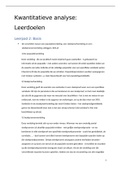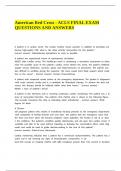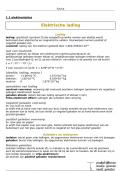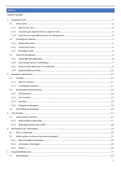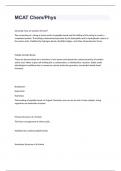PROBLEM 8
REDUCTIONISM
What is reductionism? And what are its types?
Reductionism:
Types of Reductionism:
• Ontological
- Reductionism: belief that the whole of reality consists of a minimal number of
entities/substances
- Metaphysical sense that there is but one substance/world stuff that is material
- Equivalent to some kind of monism à denying existence of unseen life forces and such
things, claiming that organisms are no more than complex functioning machines
- One might be trying to reduce material things to some other substance à like consciousness
- Could even be 2 or more irreducible substances
- Aim: to reduce all other substances to these fundamental few
• Methodological
- “small is beautiful” à best scientific strategy is the attempt explanation in terms of ever
more minute entities
- Try to reduce sociological movements to the feelings and behaviours of individual humans
- Why is it Controversial: denies claims of those who argue the world is ordered hierarchically
and that entities at upper levels can never be analysed entirely in terms of entities at lower
levels
- Biological reductionism: human nature is fully understandable in terms of genetics
- Theory reductionism: raises question of relation between successive theories in a field
(Newton’s VS Einstein’s)
- Unity of science (extreme view): all the sciences will be reduced to one super-theory
- Thomas Kuhn: believes that because the terms between theories are incommensurable, à
theories test different things so you can’t compare them
What are the threats to psychology?
Can behaviour be explained solely by neuroscience?
, GIVING UP ON CONVERGENCE AND AUTONOMY:
Why the Theories of Psychology and Neuroscience are Co-dependent as well as Irreconcilable
Hochstein
Psychology and neuroscience use sets of theories and models, employing different kinds of concepts and
categories to explain cognitive behaviour
How can this relationship be understood:
1. As neuroscience and psychology improve and change over time. Theories and models of both
domains slowly co-evolve together à Undergoing alterations and changes until they converge
on a single theory of cognitive behaviour
2. Neuroscience and psychology will not converge because the two domains characterize systems
as different levels of organization
o Theories of psychology characterize functional states of systems that can be realized in
different ways by different mechanisms
o Theories of neuroscience only characterize the physical implementation of neurological
mechanisms
o Theories of psychology are irreducible to those of neuroscience à because the functional
properties and regularities of psychology exist autonomously from one system
- Are the theories and models dependent on each other? à yes for further refinement and
improvement
- What are the representational goals of neuroscience and how do they differ from those of
psychology?
o Two domains must adopt different idealizing assumptions about the target system =
different set of theories useful for their own representational purpose but not the others
o Convergence = require that they give up idealizing assumptions that allow them to
represent the different aspects of the cognitive system
o Philosophers mistakenly infer that the two domains operate autonomously from one other
§ We develop more detailed psychological theories and models
§ The more we know about the underlying neurological architecture of a system,
the more it constrains the sorts of psychological generalizations
REDUCTIONISM
What is reductionism? And what are its types?
Reductionism:
Types of Reductionism:
• Ontological
- Reductionism: belief that the whole of reality consists of a minimal number of
entities/substances
- Metaphysical sense that there is but one substance/world stuff that is material
- Equivalent to some kind of monism à denying existence of unseen life forces and such
things, claiming that organisms are no more than complex functioning machines
- One might be trying to reduce material things to some other substance à like consciousness
- Could even be 2 or more irreducible substances
- Aim: to reduce all other substances to these fundamental few
• Methodological
- “small is beautiful” à best scientific strategy is the attempt explanation in terms of ever
more minute entities
- Try to reduce sociological movements to the feelings and behaviours of individual humans
- Why is it Controversial: denies claims of those who argue the world is ordered hierarchically
and that entities at upper levels can never be analysed entirely in terms of entities at lower
levels
- Biological reductionism: human nature is fully understandable in terms of genetics
- Theory reductionism: raises question of relation between successive theories in a field
(Newton’s VS Einstein’s)
- Unity of science (extreme view): all the sciences will be reduced to one super-theory
- Thomas Kuhn: believes that because the terms between theories are incommensurable, à
theories test different things so you can’t compare them
What are the threats to psychology?
Can behaviour be explained solely by neuroscience?
, GIVING UP ON CONVERGENCE AND AUTONOMY:
Why the Theories of Psychology and Neuroscience are Co-dependent as well as Irreconcilable
Hochstein
Psychology and neuroscience use sets of theories and models, employing different kinds of concepts and
categories to explain cognitive behaviour
How can this relationship be understood:
1. As neuroscience and psychology improve and change over time. Theories and models of both
domains slowly co-evolve together à Undergoing alterations and changes until they converge
on a single theory of cognitive behaviour
2. Neuroscience and psychology will not converge because the two domains characterize systems
as different levels of organization
o Theories of psychology characterize functional states of systems that can be realized in
different ways by different mechanisms
o Theories of neuroscience only characterize the physical implementation of neurological
mechanisms
o Theories of psychology are irreducible to those of neuroscience à because the functional
properties and regularities of psychology exist autonomously from one system
- Are the theories and models dependent on each other? à yes for further refinement and
improvement
- What are the representational goals of neuroscience and how do they differ from those of
psychology?
o Two domains must adopt different idealizing assumptions about the target system =
different set of theories useful for their own representational purpose but not the others
o Convergence = require that they give up idealizing assumptions that allow them to
represent the different aspects of the cognitive system
o Philosophers mistakenly infer that the two domains operate autonomously from one other
§ We develop more detailed psychological theories and models
§ The more we know about the underlying neurological architecture of a system,
the more it constrains the sorts of psychological generalizations


